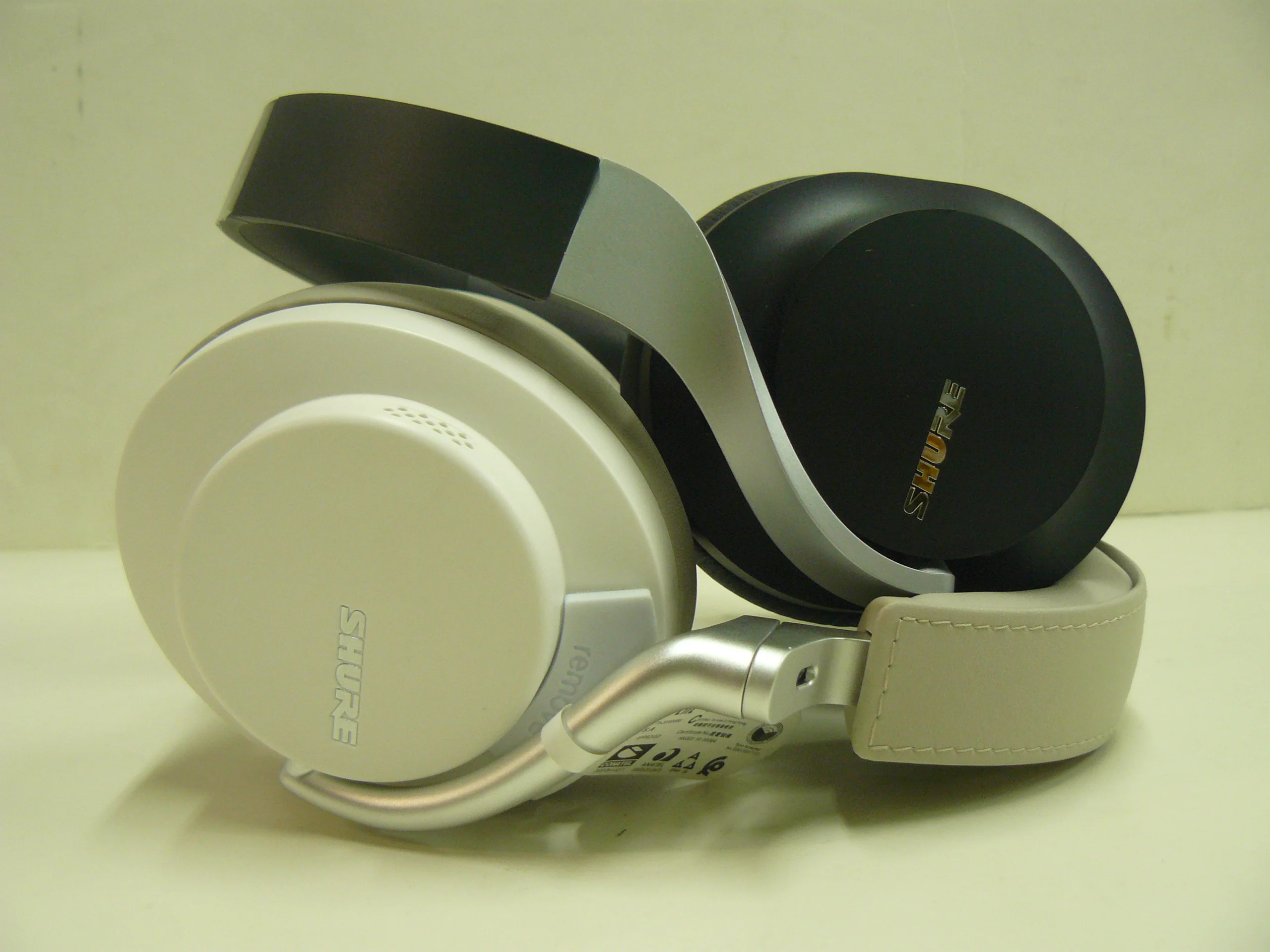We now have two over-ear Bluetooth headphones from Shure that both have their own advantages and disadvantages.
It’s easy to write off the new Aonic 40 as a lesser version of the 50, but that wouldn’t be accurate, as they both have different qualities to bring to the table. Let’s see how these headphones compare to one another so that you can better decide which one might be right for you.
What You Get
|
Aonic 40 |
Aonic 50 |
|
|

Look and Feel
On the outside, both headphones seem like they have a similar style, but it is really the parts that make the Aonic 50 the clear winner in this area. The Aonic 40 still has a great build, but its use of more plastic parts doesn’t compare to its predecessor's more rigid design. I felt that when testing both headphones, the Aonic 50 was more thoughtfully put together, and seemed the most durable of the two. Both headphones still come together really well and fit perfectly with their over-ear design. The cup size is bigger on the Aonic 50, giving your ears a bit more breathing room, but the 40 has a snug quality to it that felt more secure.

Design and Functionality
Shure’s wireless products benefit greatly from the PlayPlus smartphone app. It houses many of the Aonic series features, such as ANC, customizable controls, and EQ. Both the Aonic 40 and 50 share these features, as well as a traditional physical button press interface, as opposed to a touch-sensitive one that’s all the rage with modern wireless headphones. These controls are easy to find and make controlling the headphone a seamless experience on both models. The only real key difference here is noise-canceling. The Aonic 40 and 50 don’t have the best ANC around, but they’re both effective in the right environments. Inside the app you have different levels of noise-canceling, but the max setting is the intended effect, as with the other modes you may as well have it off and save battery.
Bluetooth
The Aonic 40 and 50 support Bluetooth 5.0 for similar levels of bandwidth and range, However, they differ greatly in what CODECs they support. With the Aonic 40 you get SBC, AAC, aptX , and aptX HD, but with the 50 you get all of that plus aptX LL and LDAC support.
Battery Life
Surprisingly, the Aonic 40 gives you an extra five hours of playtime than the 50, culminating in 25 hours of charge, with fast charging that gives you 15 hours with only five minutes of charge. The Aonic 40 is the clear winner here.

Soundstage
Both Aonic models contain a fine standard for stereo imaging, localizing their sound elements with a good level of clarity. The difference comes in the size of these elements, to which the Aonic 50 comes in strong. A lot of the imaging on the Aonic 50 is produced with a fuller presence, engulfing the listener in an environment that appears grander. It’s almost like there’s a cinematic quality to its soundstage. In comparison, the Aonic 40 is quite linear, giving you a wide stereo field but without the height and depth of the 50. The soundstage here is more constrained, leaving a more inward headspace than an outward one.
Low End
The biggest differences between the Aonic 40 and 50 come down to how their bass timbre is. For the Aonic 40, you get a clear and detailed timbre that doesn’t do too much to call attention to itself, while the 50 produces thick textures for a more engaging response. I respect both bass outputs on an equal level. They both do their best to grab the listener with their extended tone and go about it with profiles that suit different styles. For instance, the bass grooves are more effective on the Aonic 40, but the 50 punches harder and give its frequencies much greater impact.
Mids
For the midrange, the Aonic 40 and 50 are pretty much at opposite ends of the sound spectrum. On the Aonic 50, the mids are quite recessed, giving you a more v-shaped sound signature with little emphasis on fundamental frequencies. This can detract from the performance of some instruments, as well as vocals which relegate to the background in some cases. With the Aonic 40, those frequencies are mostly returned and are much richer in comparison. It's still pretty selective with which midrange bands it wants to accentuate, but it still comes off as more refined than the 50.
Highs
Regarding the highs, it will be easier to make your decision based on what you want out of this range of frequency. Like the mids, the treble on both headphones operates in direct distinction from one another. The Aonic 50 has a much more pronounced crispness than the 40, which underemphasizes a lot of its highs for a smoother response. EQ can change some of the ways both headphones deliver their treble, but in that native state, the Aonic 50 just has a lot more detail to reveal compared to the more laid-back Aonic 40.
Summary
The Aonic 40 and 50 have their strengths and weaknesses. Overall it’s hard to pick one and call it the complete package since their differences lean towards people's tastes. For instance, if you prefer softer treble and a more easy-going bass, then the Aonic 40 will be perfect for you, but if you want that v-shaped signature with impact and spaciousness, the Aonic 50 will be the right pick. ANC isn’t a strong point for either headphone, but they both provide you with a ton of features that are easy to access and friendly to use within the PlayPlus app. These are both great wireless options that will definitely work for you no matter the price point.
The Aonic 40 and Aonic 50 from Shure are available now at Audio46.


 FREE Shipping
FREE Shipping




